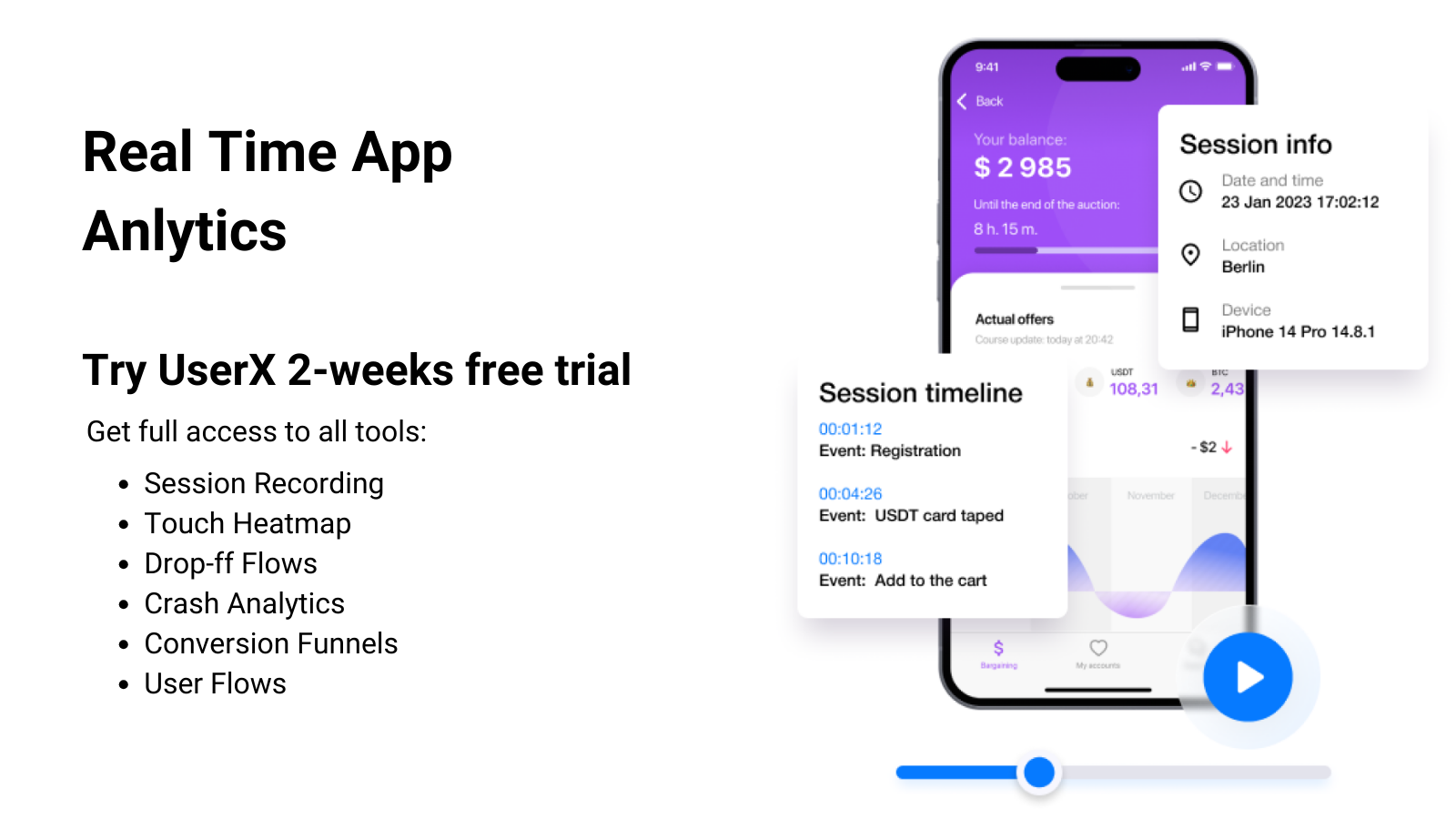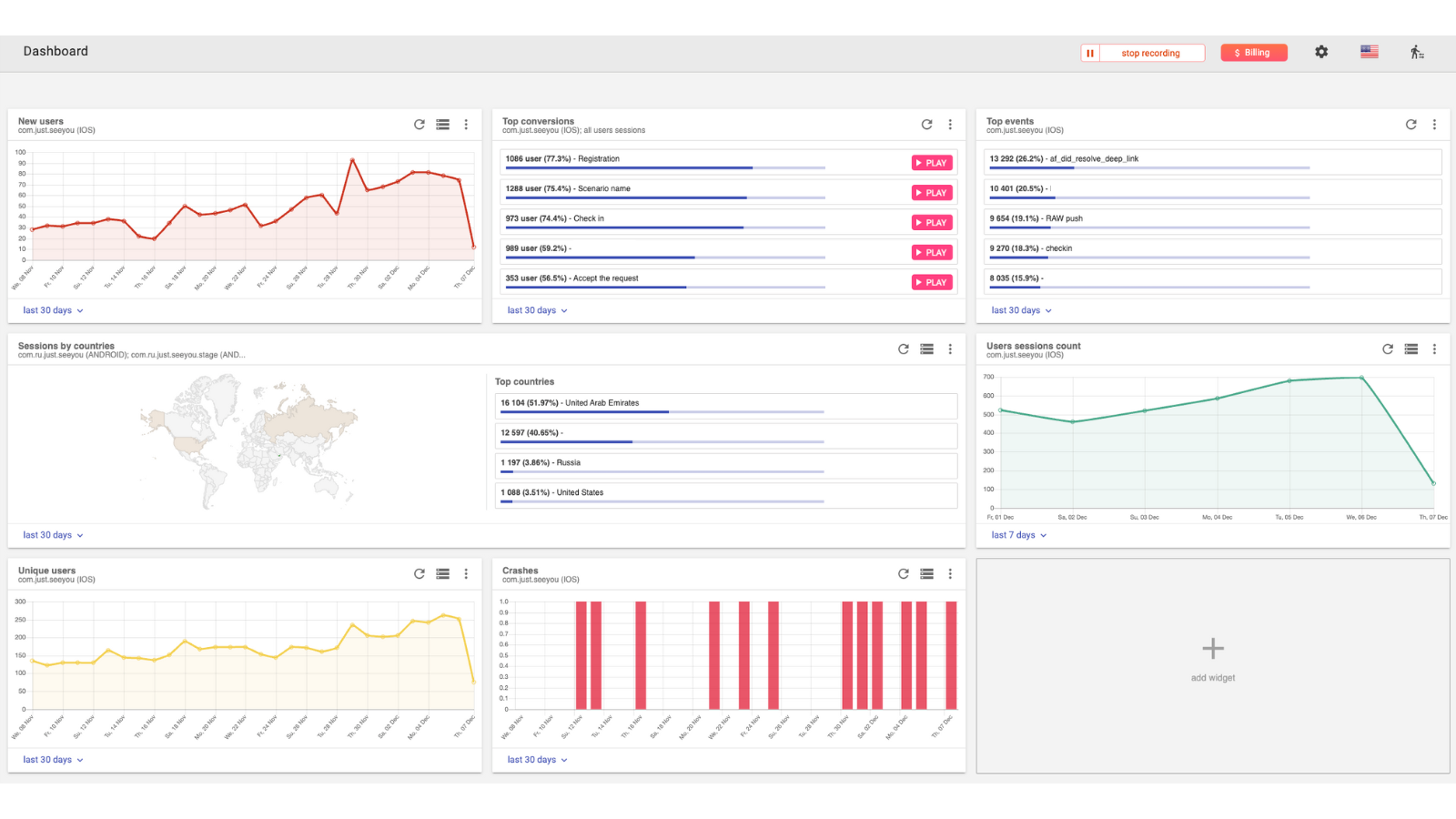Table of Contents
Introduction to Real-Time Analytics
Real-time analytics is a cutting-edge approach to data analysis, where information is processed and evaluated as soon as it enters the system. In the context of the app industry, this means analyzing user interactions, behaviors, and app performance metrics instantaneously as they occur within the app. The relevance of real-time analytics in this domain is profound. It allows app developers and marketers to gain immediate insights into how users are engaging with their applications, enabling them to respond quickly to user needs, optimize user experience, and make data-driven decisions in a timely manner.
This immediacy is particularly crucial in today’s fast-paced digital environment where user preferences and behaviors can change rapidly. Real-time analytics empowers app professionals to stay agile and adaptable, ensuring that their apps remain relevant, engaging, and high-performing in a competitive market. By leveraging this kind of analytics, businesses can proactively address issues, capitalize on emerging trends, and continuously refine their strategies to enhance user satisfaction and drive growth.
Real-Time Usage Analytics
Real-time usage analytics involves the immediate monitoring and analysis of how users interact with a mobile app. This form of analytics captures and evaluates data on user activities, such as app opens, feature usage, session durations, and user interactions, as they happen. The key aspect of real-time usage analytics is its instantaneous nature, allowing for a dynamic understanding of user behavior at any given moment.
The importance of real-time usage analytics in understanding user behavior is substantial. By providing up-to-the-minute insights, it enables app developers and marketers to see not just what users are doing, but also how they are doing it in real-time. This immediacy is crucial for several reasons:
- Rapid Response to User Needs: Real-time data allows for a swift response to user preferences and issues. If a particular feature is experiencing high usage or causing problems, developers can take immediate action.
- Enhanced User Engagement: Understanding user behavior as it happens helps in tailoring the app experience to user preferences, leading to higher engagement levels.
- Predictive Analysis: By observing current user behavior patterns, real-time analytics can help predict future trends and user needs, enabling proactive strategy adjustments.
- Optimized User Experience: Continuous monitoring of user interactions allows for ongoing optimization of the user experience, ensuring the app remains user-friendly and relevant.
- Data-Driven Decision Making: Real-time usage analytics provides a robust foundation for making informed decisions about app features, marketing strategies, and content updates.
In essence, real-time usage analytics offers a dynamic and comprehensive view of how users engage with an app, providing invaluable insights for enhancing user experience, driving engagement, and ensuring the app’s continued success in the competitive digital marketplace.

Analyzing Real-Time Data with UserX
Utilizing UserX for analyzing real-time data in mobile apps offers a comprehensive and immediate understanding of user interactions and app performance. UserX's capabilities in handling real-time data are both extensive and nuanced, providing a deep dive into the immediate responses and behaviors of app users.
Session Recordings in Real-Time: UserX offers real-time session recordings, capturing every action a user takes within the app as it happens. This feature allows developers and marketers to observe user interactions instantly, providing an unfiltered view of the user experience.
Instantaneous Touch Heatmaps: With UserX, touch heatmaps are updated in real-time, showing where users are most engaged in the app. This feature helps in identifying the most interacted parts of the app, allowing for rapid modifications to enhance usability and engagement.
Real-Time Analytics Dashboard: UserX provides a dynamic dashboard that displays real-time analytics, including user engagement metrics, active sessions, and behavioral patterns. This dashboard serves as a command center for monitoring user activity as it unfolds, offering insights that can guide immediate decision-making.
Advantages of Using UserX for Real-Time Data Analysis:
- Immediate Problem Detection and Resolution: Real-time analysis with UserX allows for the quick identification and resolution of issues, be it user experience glitches or technical problems.
- Enhanced User Engagement: By understanding user behavior in real-time, UserX enables the development of more engaging and user-centric app features and content.
- Data-Driven Decisions: The immediate insights provided by UserX support rapid, data-driven decision-making, crucial in the fast-paced app industry.
- Predictive Insights: Real-time data analysis can also offer predictive insights, helping to forecast future user behaviors and trends, thereby aiding in strategic planning.
- Optimized Marketing Strategies: Marketers can use real-time data to tailor and adjust campaigns for maximum impact, based on how users are currently engaging with the app.
In summary, analyzing real-time data with UserX equips app developers and marketers with a powerful tool to understand and respond to user needs instantaneously. This capability is invaluable in optimizing the app’s performance, enhancing user satisfaction, and staying ahead in the competitive app market.

Users of Real-Time Analytics
Real-time analytics is a versatile tool that finds its application across various roles within the digital product sphere. The primary users of this technology include app developers, marketers, product managers, and customer support teams. Each of these groups leverages real-time analytics for distinct, yet interconnected purposes.
App Developers:
Developers use real-time analytics to monitor the app’s performance in terms of speed, responsiveness, and reliability. They track technical metrics like load times, error rates, and crash reports. This immediate feedback is crucial for promptly addressing any technical issues that could affect user experience or cause app downtime.
Marketers:
For marketers, real-time analytics is a goldmine for understanding user engagement and the effectiveness of marketing campaigns. They track metrics like user acquisition sources, engagement rates, and conversion rates from various campaigns. This information is vital for adjusting marketing strategies on the fly to maximize ROI.
Product Managers:
Product managers rely on real-time analytics to make informed decisions about the app’s features and overall direction. They analyze data on user behavior patterns, feature usage, and user feedback to understand what’s working well and what needs improvement. This insight helps in prioritizing product development efforts to align with user needs.
Customer Support Teams:
Customer support teams use real-time analytics to better understand and resolve user issues. By having access to up-to-date user interaction data, they can more effectively troubleshoot problems and provide timely support, thereby improving overall user satisfaction.
In essence, real-time analytics serves as a critical tool for these diverse groups, enabling them to perform their roles more effectively. By providing instant insights into various aspects of an app’s usage and performance, real-time analytics helps in creating a more responsive, user-centric, and efficient mobile app experience.
Real-Time Data Visualization
Real-time data visualization refers to the dynamic representation of data as it is collected and processed, offering an immediate graphical view of information. In the context of mobile app analytics, this means visualizing user interactions, behaviors, and app performance metrics as they occur, allowing for an instant understanding of the current state of the app.
When implemented in UserX, real-time data visualization takes several forms:
Dynamic Dashboards:
UserX features interactive dashboards that update in real-time, displaying key metrics such as active user count, session durations, and user engagement levels. These dashboards are designed to provide a quick, at-a-glance understanding of the app’s current performance and user behavior.
Live Heatmaps:
One of the standout features of UserX is its ability to generate live heatmaps. These heatmaps show where users are interacting with the app at any given moment, highlighting areas of high activity and potential points of user interest or frustration.
Graphical Representations of User Journeys:
UserX visually maps user journeys within the app, showing the paths taken by users in real-time. This feature allows for the tracking of user flow from one feature or screen to another, providing insights into how users navigate the app.
Real-Time Session Playback:
UserX offers the capability to view session replays as they happen. This means that behaviors, interactions, and actions of users within the app are visualized in a video format, giving a direct view into the real-time user experience.
Customizable Visualization Tools:
UserX provides customizable tools that allow teams to create their own visualizations based on specific metrics or user segments. This flexibility enables teams to focus on the data most relevant to their needs, displayed in an easily digestible format.
Through these various forms of real-time data visualization, UserX provides a powerful and immediate way to understand and analyze user behavior, app performance, and overall user experience. This real-time insight is invaluable for making swift decisions, adapting strategies, and ensuring the app remains aligned with user needs and preferences.

Characteristics of Real-Time Data
Real-time data is distinguished by its immediacy and relevance, providing a snapshot of events and interactions as they occur. Its key features and appearance can be described as follows:
Timeliness:
The most defining characteristic of real-time data is its freshness. This data is generated and made available instantly, without delay, offering an up-to-the-moment view of the subject being monitored, be it user behavior, app performance, or transactional activity.
Continual Stream:
Real-time data often appears as a continuous flow. Unlike batch-processed data, which is updated at regular intervals, real-time data is constantly being updated, providing a live feed of information.
Dynamic Visualization:
In its visual form, real-time data is typically represented through dynamic dashboards and live charts. These visualizations update continuously, reflecting the most current data available. For instance, a graph depicting app usage would fluctuate in real-time as users interact with the app.
Variability:
Given its immediate nature, real-time data can exhibit high variability. It captures the nuances of rapid changes, fluctuations, and trends, providing a detailed picture of the monitored activities at any given moment.
Actionable:
Real-time data is inherently actionable. Its immediacy allows decision-makers to react promptly to the data, whether it’s to capitalize on a trend, address a problem, or adjust a strategy.
Structured and Unstructured Forms:
Real-time data can be both structured (like numbers and dates) and unstructured (like text and images). This versatility means it can provide a wide range of insights, from quantitative analysis to qualitative understanding.
Interactivity:
Often, real-time data systems allow for a level of interactivity. Users can filter, drill down, or manipulate the data to focus on specific aspects, making it a powerful tool for detailed analysis.
In summary, real-time data stands out for its immediacy, continuous updating, dynamic visualization, and variability. It provides a live, detailed, and actionable view of the subject matter, which is invaluable for timely decision-making and strategic adjustments in a fast-paced environment.
Examples of Real-Time Reporting in Mobile Apps
Real-time reporting in the context of mobile apps encompasses a range of functionalities that offer immediate insights into various aspects of app performance and user behavior. Here are some illustrative examples:
Live User Engagement Metrics:
A mobile app can use real-time reporting to display live data on user engagement. For example, an e-commerce app might show the number of active users currently browsing products, items being added to carts, or real-time sales numbers.
Instantaneous Performance Dashboards:
Apps often have dashboards that report key performance indicators (KPIs) in real time. This could include metrics like current app load times, server response times, or the number of active sessions, allowing developers to monitor the app’s performance continuously.
Real-Time User Feedback:
Mobile apps can utilize real-time reporting to gather and display user feedback instantly. For instance, after updating a feature, an app could show real-time reactions or ratings from users, helping developers gauge immediate responses.
Geographical Activity Mapping:
For apps that track user location, real-time reporting can visually display geographical data, such as showing a map with live locations of users, or tracking the movement of delivery services in real-time.
Social Media Interaction Tracking:
Social media apps or features within apps can use real-time reporting to show live data on user interactions, like the number of live comments, shares, or likes on a post.
Real-Time Notification Analytics:
Mobile apps can track and report the performance of push notifications in real time, showing how many users received, opened, and interacted with a notification as soon as it is sent.
Instantaneous Traffic and Usage Patterns:
Apps with high user traffic, like news or content streaming services, can benefit from real-time reporting of user traffic patterns, showing which articles are being read or videos being watched at any given moment.
These examples demonstrate the diverse applications of real-time reporting in mobile apps, offering instantaneous data that aids in quick decision-making, enhances user engagement, and optimizes overall app performance.



